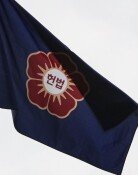No Viable Solution to Birthless Society
No Viable Solution to Birthless Society
Posted June. 02, 2005 06:45,
Kim Ja-young (aged 31), the mother of an 18-month-old daughter, has a job. She doesnt plan on having any more children, and her daughter is taken care of by her parents-in-law in Gwangju. They even tell her We cannot baby-sit another one. Dont ever think of having another one, even a son for us.
Kim said, It has been a while since I have seen my husband because we come home at different hours, adding, It would be too burdensome to have another baby because I love working. But most of all, babysitting is difficult to arrange and it is too costly to educate children in Korea.
In Korea, the serious problem of women of childbearing age avoiding bearing children is arising. Childless or not, 50 percent of married women ages 30 to 34 answered, I am not thinking of having children. This means one child would do, just like in Kims case.
A report the Ministry of Health and Welfare (MOHW) submitted to the secretariat meeting on the relationship between society, culture, and policy held on June 1 also had a pessimistic outlook.
In accordance with a request by the MOHW, the Population Association of Korea recently conducted a survey on 1,008 men and women in their 20s to 40s nationwide, and a half of the married respondents between the ages of 30 to 34 answered, I am not thinking of having children. One out of 10 responded, I was thinking of having children, but delayed the plan. Some of the reasons for this were financial stress, and the double burden between work and housework.
This does not only apply to married people. As for the unmarried, about a half of them answered, I will get married later, (32 percent), and I have no plans to get married, (17 percent). Some of the reasons included: Because of financial difficulties (32 percent), Not finding the right person (27 percent), and Wishing to enjoy a single life(18 percent).
The number of babies born last year across the nation hit the lowest level, 481,085, since the National Statistical Office began releasing demographic statistics. Accordingly, it is expected that the fertility rate for women aged 15 to 49 will be 1.15, the lowest figure ever.
Although the governments goal is to raise the fertility rate to 1.6, the level of OECD countries, and increase it to the range of 1.8 over the long haul, experts cast doubt on the feasibility of the plan.
Demographers argue, The cause behind the low birth rate is the low fertility rate of married women, but more fundamentally, women of child-bearing age either are not getting married or delaying it, adding, Marriage promotion measures are imperative to raise the birth rate.
However Professor of demographics, Cho Young-Tae, analyzed, Uncertainties over the future after the economic crisis have led the unmarried to delay getting married and to avoid giving birth.
The OECD predicted that in case Korea adopts various measures to boost the population, the fertility rate would rise as much as 2.5. It is comparatively optimistic compared to the rate for other countries: the U.S. (2.4), France and the U.K. (2.1 for both), Japan (2.0), and Sweden (1.7).
Seo Mun-hee, a deputy researcher at the Korea Institute for Health and Social Affairs, said, Various measures the OECD mention include policies on working systems, child-care policies and financial assistance in child care so that both working and taking care of the family are doable, adding, However, I doubt that companies or the government will pursue any of these policies.
Jin-KyeongKim TK Sohn kjk9@donga.com sohn@donga.com
Headline News
- Med professors announce intention to leave hospitals starting Thursday
- Bridge honoring Sgt. Moon Jae-sik unveiled in Pennsylvania
- Chief of Staff Chung tells presidential secretaries to stay away from politics
- US FTC bans noncompete agreements
- N. Korea launches cyberattacks on S. Korea's defense companies







